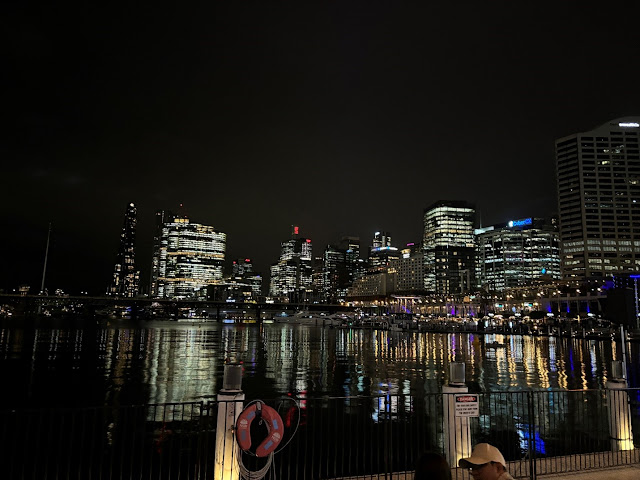On the morning of May 21st, 2024, we started off our day bright and early once again to leave Sydney and make the long journey home. After reflecting on the trip, it was interesting to hear different students’ highlights from the trip, as many of us study different parts of the agricultural field and come from a variety of different agricultural backgrounds. The opportunities offered during our Australia trip provided different outlooks on the industries and agricultural practices that were used there as compared to those used here.
 |
| A view from our plane as we descend into Los Angeles on May 21st. |
When asked about what their
highlights were, students had a variety of different answers. Many reflected on
their time being “tourists,” visiting the Great Barrier Reef with some being in
the ocean for the first time and even spotting a shark, viewing The Sydney Opera
House on our lunch cruise then getting to tour the interior, searching for souvenirs
for themselves or family, and visiting other popular locations and landmarks
like the Three Sisters and Twelve Apostles.
 |
| The Sydney skyline, including the Sydney Opera House from our lunch cruise on May 20th. |
On the agricultural side of things, many students mentioned their visit to Baanga farms to learn about their regenerative practices... with a quick detour to chase down kangaroos and see a koala for the first time. Another stop that many mentioned was Midfield Protein Solutions, offering a unique perspective based on efficiency with an export-focused approach through different practices with beef, lamb and dairy. Many found it very interesting to see the similarities and differences within their perspectives and goals compared to companies in the United States.
Other students mentioned their stop
at Pepperton Poll Dorset and White Suffolk Stud farm. Here they had the opportunity to learn about
the owners’ day-to-day responsibilities, how their schedule looks throughout
the year, watch their sheep dogs help sort and move lambs, then vaccinate and
dock lamb tails. Others simply had the joy to hold and fuss over the lambs.
A perspective from some included
the food that was offered during the trip, specifically at Skybury farms in
Northern Queensland where the fruits were freshly grown and then sold in their
very own focused restaurant. For a few
students, this trip gave them the opportunity to try passionfruit and papaya
for the first time!
We are very thankful and
appreciative that we were given the opportunity to go on this trip as we know
many people will likely never have the chance to learn what we have and see the
beautiful things that Australia has to offer. The wonderful thing about this
trip is the diversity of learning areas along the trip that allows everyone,
regardless of background or area of study, to come away with a positive and
educational experience.
We would like to thank Julie Walker and Rosie Nold for working hard to organize this trip and make it educational and memorable for us all, Ron Paynter for giving his time to guide us around the country, and Dean Cassady for his generous support of international agricultural education at SDSU.
 |
| A photo taken in Sydney on our last evening in Australia after our farewell dinner with our fellow students, instructors, and our tour guide Ron. |
`

















































